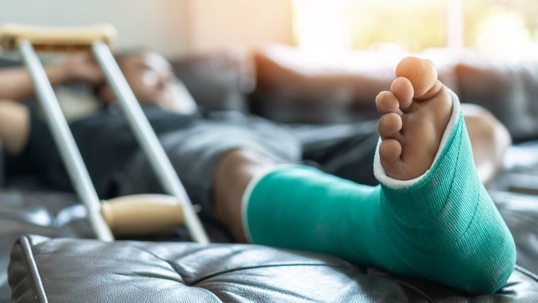The human leg, a complex structure comprising bones, joints, muscles, tendons, and ligaments, plays a vital role in mobility. Unfortunately, this intricate framework is susceptible to various types of injuries—especially fractures and breaks—in car accidents.
During an accident, legs can be trapped or crushed between the car's interior and the external force of the crash, leading to bone fractures. Leg injuries can also occur because of the:
- Abrupt deceleration
- Point of impact
- Force of the collision
- Flying debris
Regardless of specific causation, you can pursue damages to help you cover your medical expenses and other financial losses if the other driver acted negligently. In this blog, we will discuss the types of leg injuries sustained from car accidents in further detail.
Leg Fractures & Bones Breaks
There are multiple types of fractures and breaks that a person can sustain in an accident, including:
- Femur fractures are severe injuries often resulting from high-impact collisions. They can be classified into three categories based on their location: proximal (near the hip), distal (near the knee), and shaft (middle section). Symptoms include severe pain, inability to move or stand, and visible deformity.
- Knee joint fractures often involve the patella and can occur if the knee hits the dashboard during a crash. Symptoms include intense pain, swelling, bruising, and difficulty moving the knee.
- Tibia fractures are common in car accidents due to the bone's location and size. Fibula fractures usually occur alongside tibia fractures. Symptoms include pain, swelling, visible deformity, and inability to bear weight.
The treatment for a fracture is determined by its type and severity. Non-displaced fractures, where the bones remain aligned, can be treated by immobilizing the bone with casting or bracing to promote healing. On the other hand, displaced fractures, where the bones move apart, often require surgical intervention to realign and stabilize the bone using pins, screws, or plates.
Some individuals may experience long-term effects post-injury, such as reduced mobility, chronic pain, arthritis, and psychological impacts like post-traumatic stress disorder. As each person and injury is unique, the specific effects and treatment plans can vary.
Amputations
In certain accidents, a crushing injury can occur when a part of the body, such as the leg, is trapped between two objects during an accident. These injuries can lead to significant tissue damage, blood loss, and in severe cases, necessitate medical amputation. If the crushing injury is too severe, or if there is a high risk of infection and other complications, medical professionals may decide that amputation is the most viable option to save the person's life and prevent further health complications.
Torn Meniscus
Each knee has two menisci, which are pads of cartilage in your knee that help absorb shock. Meniscus tears are a common type of injury that can occur when the upper part of the leg is twisted or turned while the knee is bent and a person’s foot is planted. Thus, during a car accident, while a person is in a seated position with their feet planted, the force of a car accident can jostle a person and cause a meniscus tear.
Symptoms of this injury include:
- Localized swelling
- Pain in the knee joint
- Limping
- Inability to extend or bend the knee joint
- Catching or locking the knee joint
Knee Bursitis
During a car accident, the sudden impact and force can cause direct trauma to the knee, leading to injury and subsequent swelling of the bursa. This can also occur if the knee experiences repeated minor trauma or strain during the accident.
Symptoms typically include pain, swelling, and limited mobility in the affected knee. If left untreated, knee bursitis can result in chronic pain and further complications, emphasizing the importance of immediate medical attention after a car accident.
Ligament Injuries
Among the types of leg injuries sustained in auto accidents, ligament injuries are pretty common. The sudden force of an accident can lead to severed or punched tendons, muscles, and nerves.
These injuries often involve ligaments, which are strong bands of tissue that connect bones to each other and stabilize joints. Symptoms might include:
- Intense pain
- Swelling
- Difficulty moving the leg
- Bruising
- Instability when bearing weight on the injured leg
The long-term impact of leg ligament injuries varies depending on the severity of the injury and the effectiveness of the treatment received. In some cases, individuals may regain the full function of their leg. However, others may experience chronic pain, decreased mobility, or even permanent disability.
Helping You Fight for Fair Compensation
At the Law Offices of Charles R. Gueli, our clients are our top priority. We understand the impact a leg injury can have on your physical and financial health, so we are committed to helping our clients seek compensation for their damages.
Call (516) 628-6402 to schedule a time to discuss your case with our attorney.

